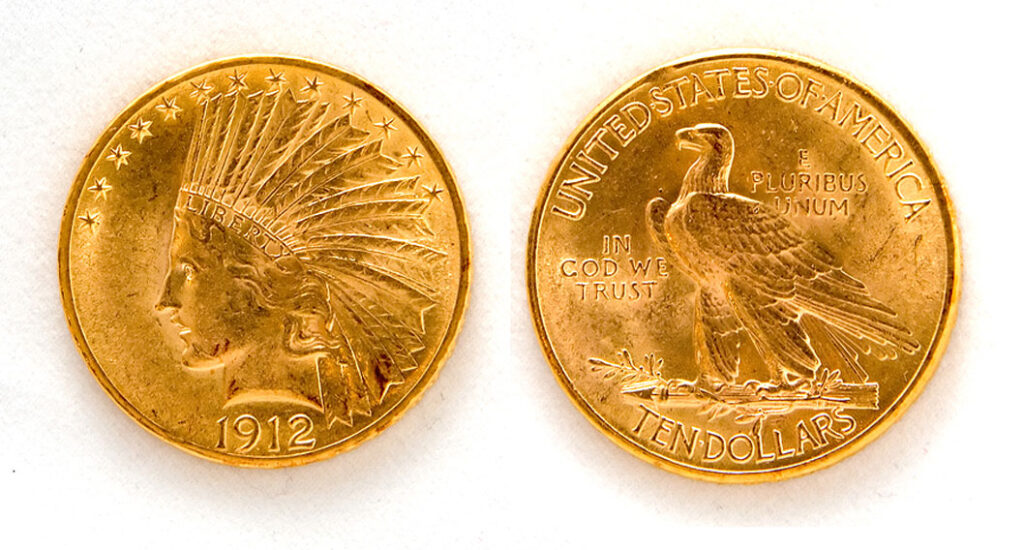 Many investors strategically diversify their portfolios with gold to protect against inflation, preserve wealth, and develop stable returns in the long run. When you invest in precious metals, proper handling and storage are important, since damage to precious metals investment products can potentially diminish their value.
Many investors strategically diversify their portfolios with gold to protect against inflation, preserve wealth, and develop stable returns in the long run. When you invest in precious metals, proper handling and storage are important, since damage to precious metals investment products can potentially diminish their value.
You’ve probably seen or experienced tarnish on silver, but what about gold? Does it rust or tarnish? Understanding how gold develops imperfections can put investors in the best position to protect their investments through proper storage and, as a result, their wealth.
Does gold rust or tarnish?
Pure gold doesn’t rust or tarnish because of its non-reactivity to oxygen in the atmosphere which is a precursor to various forms of corrosion. Iron dioxide, more commonly known as rust, develops when iron, oxygen, and water interact. Similarly, tarnishing occurs when various types of metals such as silver, copper, or aluminum come into contact with sulfur-containing gases. Gold’s classification as a noble metal means it isn’t affected by elements in the environment that cause corrosion in more reactive and susceptible metals.
Despite gold’s impressive resistance to corrosion, its malleability and softness make it impractical to produce pure gold assets. Although 100% gold products would be virtually rust and tarnish-free, they would suffer scratches, dents, and deformities from normal wear and tear that could compromise their value. To overcome these natural weaknesses, manufacturers combine gold with stronger and more resilient metals including copper, silver, and nickel.
The trade-off is that, unlike noble metals, many metals alloyed with gold are reactive to atmospheric elements. This mixture exposes gold bars, coins, and various products to rust and tarnish. The allocation of metals varies between each physical gold asset, but those with higher percentages of gold tend to have greater corrosion resistance.
Spotting Corrosion on Gold Assets
Rust and tarnish are similar in terms of their chemical reactions, but these forms of corrosion impact gold assets differently. Rust tends to show up as reddish-brown spots. These spots are often dotted around a bar or coin rather than manifesting in a single clump. Tarnishing, on the other hand, is a thin layer of corrosion with a characteristic dullness that reduces the luster of gold assets. It displays a wide range of colors as it develops from yellow and green to dark brown and black.
Rust & Tarnish in Gold Bars vs Gold Coins
The most popular gold bars have impressive gold fineness, usually between 99.9% to 99.99%. Due to the exceedingly low presence of impurities, gold bars rarely experience rust or tarnish, especially when handled and stored properly. Of course, it’s still a good idea to take standard precautions regardless of the gold asset’s fineness.
Gold coins represent a broader range of purities. Generally, gold bullion coins have purity ratings of ranging from 90% to 99.99%. For example, American Eagle Gold Coins are comprised of 91.67%, and American Gold Buffalo Coins boast .9999 fineness. Alternatively, rare coins, which can represent a wide spectrum of investment-grade coinage, can dip below 90% purity in some instances. That’s why non-bullion coins are usually considered slightly more susceptible to corrosion.
How to Protect Gold Assets From Rust, Tarnish, and Other Types of Corrosion
Proper Storage
Investors should store their assets in clean and dry environments. Even the smallest amount of moisture and contaminants in the air can negatively affect gold products. There are moisture-resistant safes specifically designed to hold precious metals assets. Individual coins can be held in sealed cases, a common practice in coin-grading.
Careful Handling
It’s always a good idea to avoid direct contact between gold assets and human skin. That’s why you commonly see people wearing gloves when handling valuable items, including precious metals. The sweat and oils from your hand introduce unwanted moisture to gold assets. While it’s enjoyable to take stock of your precious metals portfolio, it’s best to keep handling to a bare minimum.
Avoid Cleaning
Ironically, cleaning gold coins and bars almost always causes more damage than it resolves. Commercial-strength cleaners are incredibly corrosive in their own way, but even water can elicit harmful chemical reactions. Plus, scrubbers, toothbrushes, and even cloths used to rub a surface clean can have abrasive effects.
Verify Authenticity
An unusual amount of corrosion can expose a gold asset’s inauthenticity by revealing a higher percentage of base metals than previously thought. That’s why investors must verify the authenticity of a gold coin or bar before making a purchase. You can accomplish this by purchasing from reputable sources or considering a third-party authentication. Due diligence from the onset can prevent undesirable and costly discoveries down the road.
How Rust or Tarnish Impacts Gold’s Value
As mentioned before, pure gold isn’t at risk of rusting or tarnishing because of its un-reactivity. That means the gold contents within a bar or coin won’t be impacted if alloyed metals experience corrosion. This isn’t a problem for gold bullion assets that are only worth their weight in gold. However, investment-grade products valued for their scarcity, historical significance, and numismatic appeal can be negatively impacted by corrosion.


